Art Fairs
In a Globalizing Economy, Art Cologne Pins Its Hopes on Going Local
Having managed to lure in several blue-chip exhibitors in recent editions, the fair is again a force to be reckoned with.
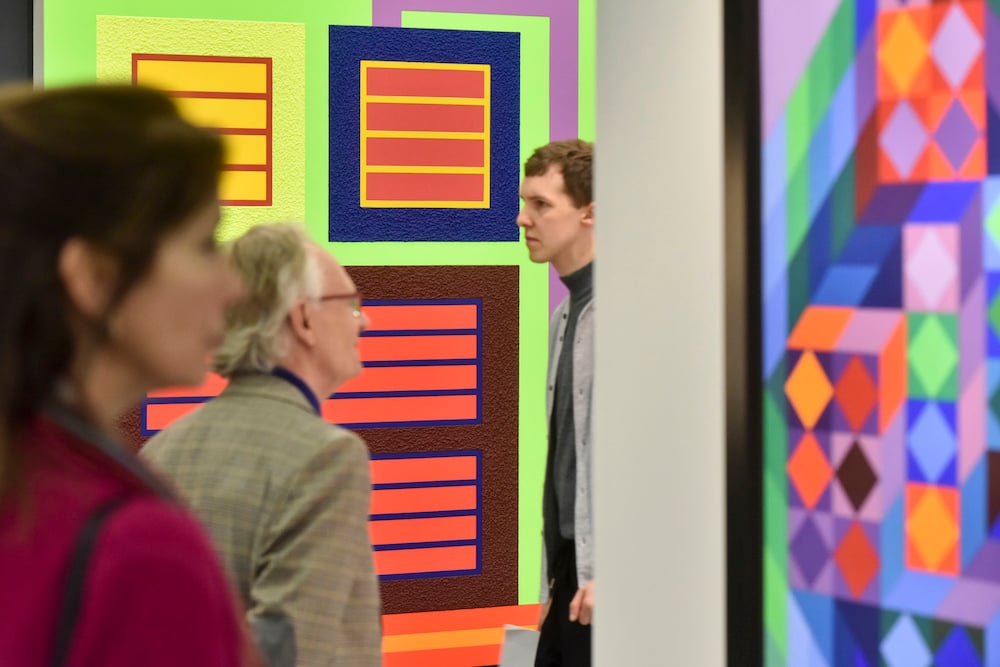
Having managed to lure in several blue-chip exhibitors in recent editions, the fair is again a force to be reckoned with.

The VIP preview of Art Cologne’s 51st edition, Germany’s oldest and grandest art fair, opened a day earlier this year due to a scheduling clash with Berlin Gallery Weekend (the fair also ends a day earlier, on Saturday). This overlap in dates, caused by an overfull art calendar and the German Easter Holidays, had the two cities’ art scenes pitted against each other, with some dealers having to choose between the two major events—and suffer the consequences in terms of sales.
By now, the minor rivalry seems like old news; the art world moves quickly, and the plot has since taken unexpected twists and turns. Art Cologne and the organizers of Berlin Gallery Weekend, who also run the city’s abc fair in September, kissed and made up. They are now negotiating the final details in the takeover of abc by Koelnmesse, the company behind Art Cologne.
Meanwhile, a new fair has been announced for the Rhineland: In February, MCH Group, the parent company of Art Basel, announced its stake in a new fair launching in November, Art Düsseldorf.
Art Cologne director Daniel Hug called MCH’s expansion into regional fairs a form of “cultural colonialism” in an interview with German media, and elaborated on the topic in a conversation with artnet News. Bringing a European model to places like India that have their own cultural identity could destroy local scenes, he argues. “The way we market art, the gallery system, and even how fairs determine what is a good gallery follows a western model.”
As for Düsseldorf, he suspects that MCH are doing it as a test run for other fairs.
Contemplating what’s motivating MCH’s strategy, he says, “Their goal is not to dominate the art world; they don’t have evil intentions. But the side effects of what they’re doing will be similar to what Nestlé is doing. Sure, they’re going to clean the water, they’ll bottle it, and make it safe—get the bacteria out. But they’re also going to sell it back to us.”
“Art fairs are here to reflect the art market,” he continues. “When an art fair or a private commercial entity goes into the proactive role of determining not only what happens in the art world, but also where, and who gets to show, that’s really dangerous. And it’s not going to work.”
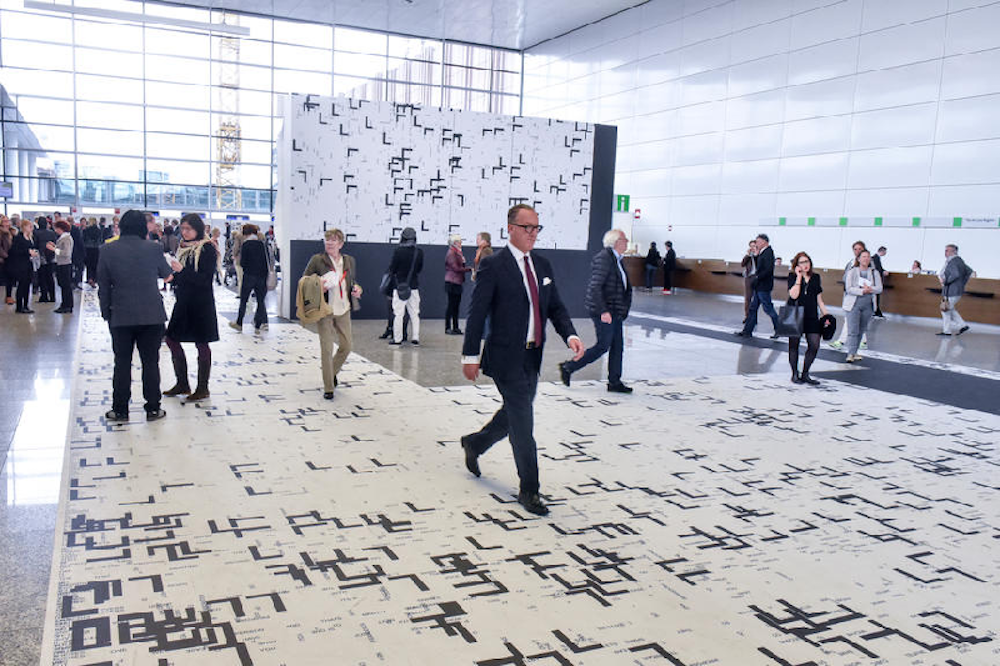
A new commission by Michael Riedel (David Zwirner) at the entrance to Art Cologne 2017. Photo ©Koelnmesse.
Dealer Johann König voiced a similar opinion, calling the not-yet-launched Art Düsseldorf “nonsense.”
“What MCH are doing with the regional fairs can actually damage the Art Basel brand, and water it down,” he said, adding that for Berlin, it makes perfect sense that Koelnmesse would launch a new fair. “The fall season in Berlin is already strong.”
Last year, König was one of the first dealers who announced he won’t be coming to Cologne because of the clash with Gallery Weekend, but having changed his mind certainly paid off. The gallery has just started representing Anselm Reyle, and his comeback show opens at König Gallery this Friday. At the fair, they’ve sold a new work by Reyle, a sculptural wall piece showing framed metal coils, for €52,000.
“After an artist’s market soars, as soon as it starts to normalize people perceive it as a crash,” König said. “But Reyle’s pieces still command good prices—€50,000 is not nothing!”
The gallery reported a flurry of sales on preview day, including several works by Jorinde Voigt, Alicja Kwade, and Camille Henrot, and others. An Elmgreen & Dragset piece fetched €150,000, and a painting by Norbert Bisky, whom the gallery has recently added to its stable, went for €37,500. Meanwhile, it seems that Andreas Schmitten, an emerging talent picked up by the gallery, has managed to convince the collectors in the Rhineland: five of his large installations changed hands.
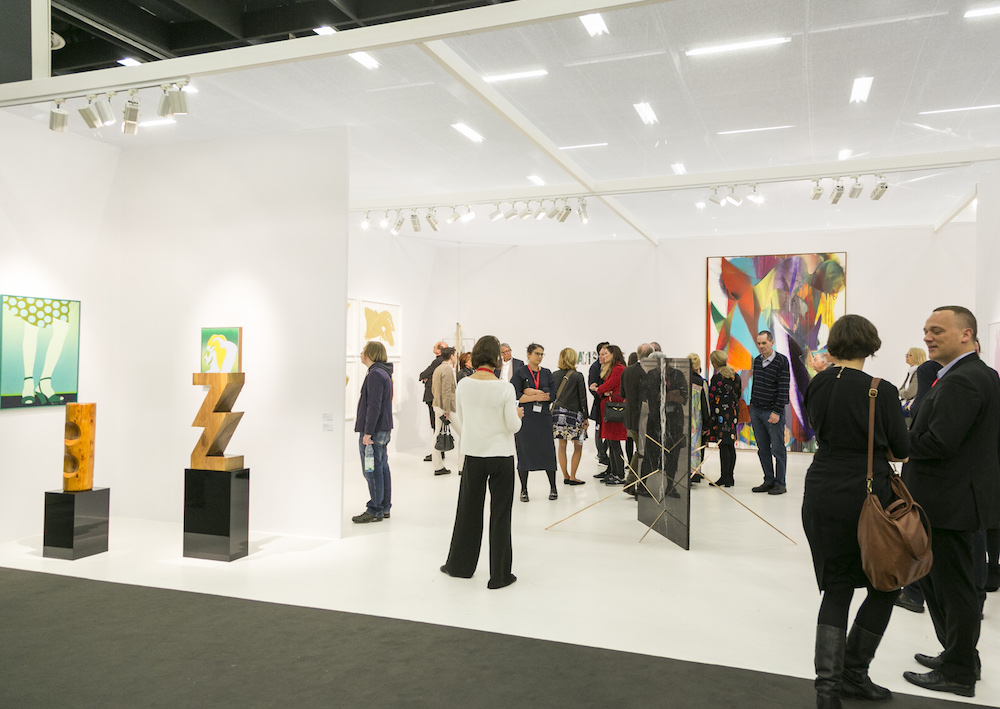
Installation view of König Galerie at Art Cologne 2017. Photo ©Koelnmesse.
It’s the Rhineland collectors—well informed, intellectual, and as solid as the German Mittlestand—that attracted several new galleries to Cologne this year, including Gagosian, David Kordansky Gallery, and Galerie Daniel Templon. For some dealers, this means doing three consecutive fairs, schlepping their wares from Brussels, to Cologne, and then Frieze New York—but what’s another fair when you’re already doing an average of one per month?
However, while many of the participating galleries opted for “safe” booths, offering a sampling of their well-collected gallery artists—preferably ones heading to the trifecta of major events in 2017, Venice, Documenta14, or Skulptur Projekte Münster—only Gagosian is showing a curated stand, changing the rules of the game to widespread (if begrudging) acclaim.
At the core of the presentation stands Chris Burden‘s work Buddha’s Fingers (2014-15), by an artist who—according to the gallery’s Jona Lueddeckens, the booth’s curator—has the distinction of being the first one that Gagosian formally represented.
Illuminated and grouped together in the middle of the otherwise empty booth, the 32 cast-iron street lamps that make up the piece are fenced off by two works obstructing two narrow entrances: Cady Noland‘s Chainlink Fence (1992) and diagonally across from it, Noland’s Untitled work, also from ’92, featuring an American flag and domestic metal objects dangling from a horizontal metal bar.
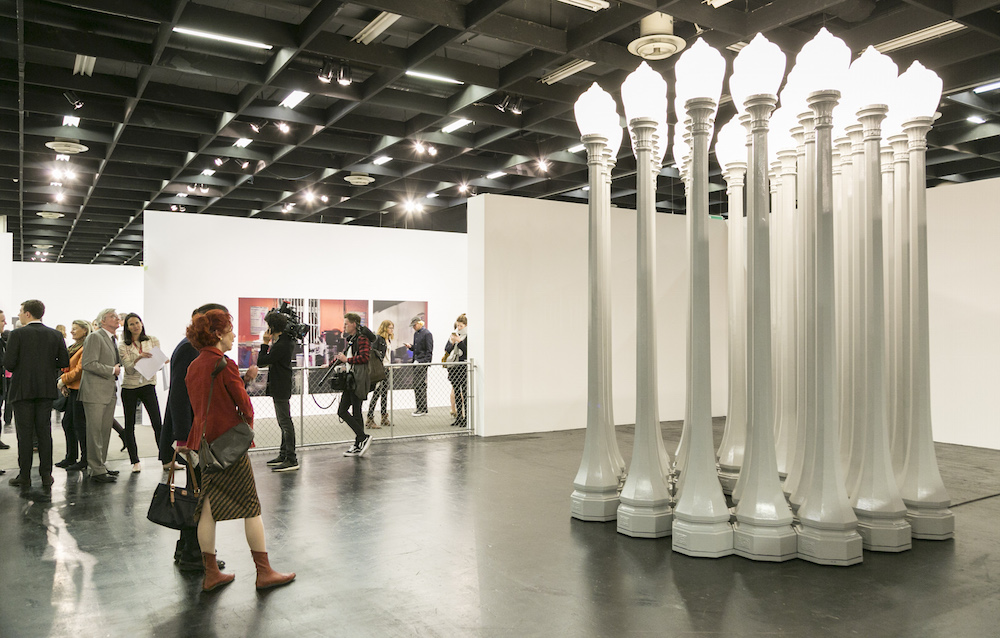
Chris Burden and Cady Noland at Gagosian, Art Cologne 2017. Photo ©Koelnmesse.
With Noland’s current record standing at nearly $10 million, perhaps more within reach for the collectors here were works lining the outer walls of the politically charged booth: two paintings of fences by Rudolf Stingel and Richard Prince’s Joke, a painting of a crass joke that offers a barbed comment on police brutality and racial discrimination in America.
This is Hug’s ninth edition as the fair’s director, and until now, as he told artnet News, his aim was to “remind everyone how central the region was” by bringing Cologne back to its former glory. He pursued dealers like Hans Mayer, Michael Werner, Lahumière—the old guard—to woo them back into the fair, “and we’ve succeeded!” he said. “We celebrated 50 years last year, and now for this edition I wanted to point into the future.”
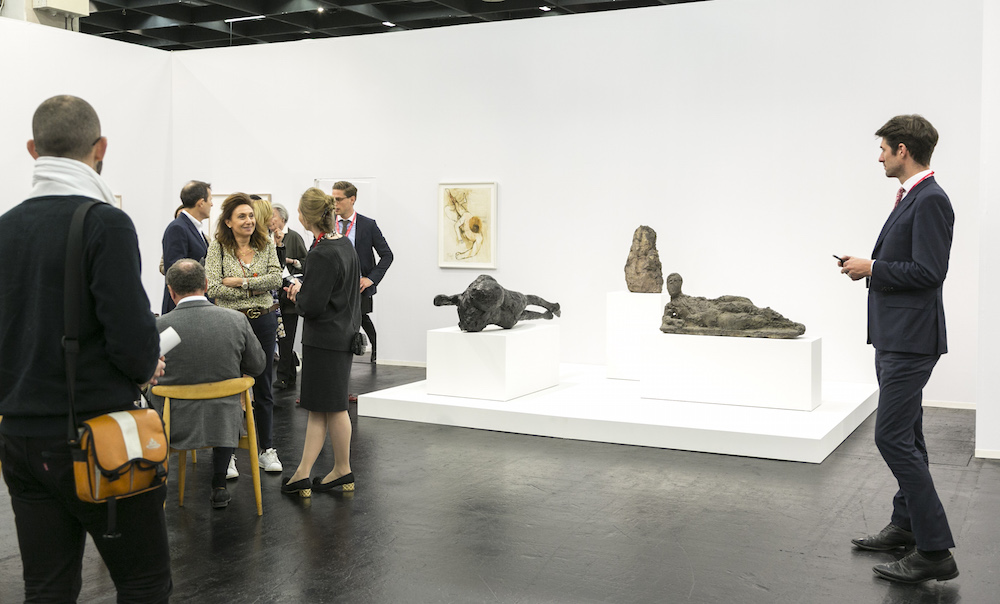
Hauser & Wirth at Art Cologne 2017. Photo ©Koelnmesse.
With galleries like Hauser & Wirth, White Cube, and Gagosian now featured on the fair’s exhibitors’ list, the focus on contemporary art is felt all throughout Art Cologne’s three levels. This happens at a time when, with the new German art law coming into effect, some of the fair’s core exhibitors dealing with Modern art might be facing an uncertain future, and the ground level reserved for them was—atypically—filled with works dating from the 2000s up until 2016.
As Hug pointed out, fairs reflect the market. The German one has just gotten a bit more exciting.